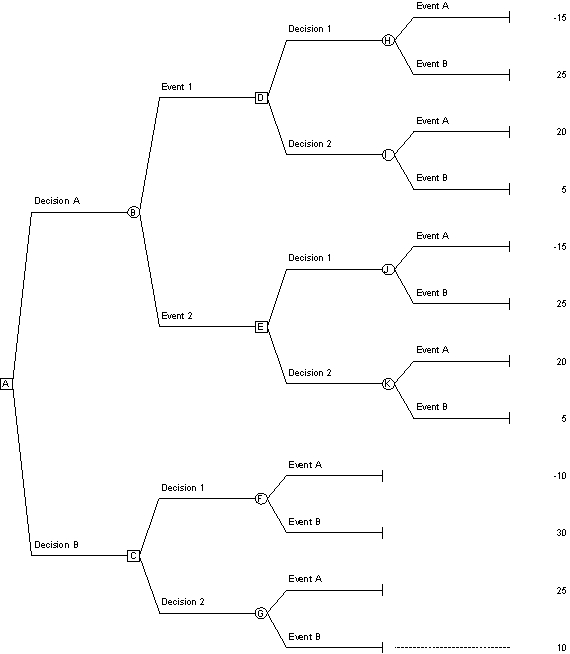Heading: Analyzing Risky Decisions
**Reference: Use the decision tree along with the given probabilities to answer the next six questions
Probability Event A = 30% Probability Event B = 70%
Probability Event 1 = 58% Probability Event 2 = 42%
Probability of Event A given that Event 1 occurs = 16%
Probability of Event B given that Event 1 occurs = 84%
Probability of Event A given that Event 2 occurs = 50%
Probability of Event B given that Event 2 occurs = 50%

-*If the cost of obtaining information to determine Event 1 and Event 2 is $5, what is the value of perfect information?
Definitions:
Negative Reinforcement
A process in operant conditioning where a response is strengthened by stopping, removing, or avoiding a negative outcome or aversive stimulus.
Withdrawing
The act of pulling back or removing oneself from a particular situation, interaction, or engagement.
Primary Reinforcer
A stimulus that satisfies a basic need or inherently reinforces a behavior, such as food or water.
Water
A transparent, tasteless, odorless, and nearly colorless chemical substance, composed of hydrogen and oxygen (H2O), that is the main constituent of Earth's hydrosphere and the fluids of most living organisms.
Q3: Discuss how computer systems affect wholesalers' and
Q5: An environmental economic consulting firm is hired
Q5: How should social class influences affect the
Q18: If a nonprofit hospital were planning to
Q34: Consider a repeated prisoner's dilemma game. The
Q39: When a perfectly competitive market is in
Q45: A monopolist faces two consumer groups:
Q68: Two firms are enough to replicate perfectly
Q71: Suppose that the market for cigarettes
Q72: A monopolist will produce where:<br>A)demand is elastic.<br>B)demand